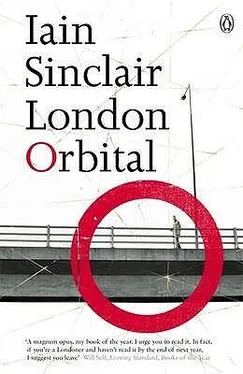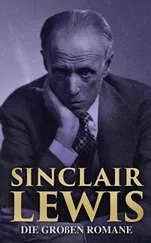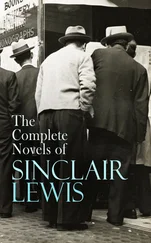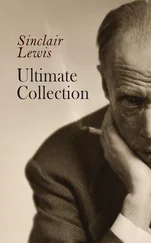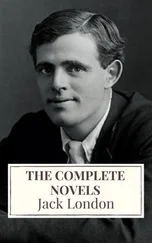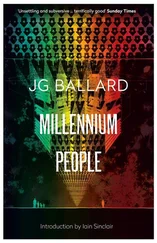Ultimately, all walks contradict the he of the land; they will be circular. An ‘Outer Orbital Route’ designed to ‘follow the outer edge of London, a country walk with London always nearby’. The Lea, given time and investment, would stand physics on its head. It would become a sylvan alternative to the M25. With the motor car as its handmaiden. ‘Consideration must be given to the needs of the motorist.’ A green halo. An aureole around smoking tarmac. ‘Leave the M25 at Junction 25. Follow the signs for City. At first set of traffic lights turn left signposted to Freezywater.’ This is the Lee Valley Leisure Complex.
‘We will make our commitment to our duty of Best Value; ensuring clarity of objectives and customer and performance focusat the heart of our cultural and organisational change… Major Capital Development will seek to achieve Best Value.’
Did we qualify — as customers? Drummond, Atkins and Sinclair? Unlikely. Elective leisure was the condition of our lives, endured through a puritanical work ethic. Drummond scribbling away, anonymously, in the cafeteria of a provincial department store. Atkins hunched in his dark room. Sinclair zigzagging around the fringes in a frantic attempt to avoid all versions of the circuit, the smooth walk that carries you back to the point of departure. We were spurners of Best Value. Drummond burnt money and gave away self-published booklets. Atkins printed more photographs than he could sell in ten lifetimes. I wrote the same book, the same life, over and over again. We wanted Worst Value. We refused cashback. We solicited bad deals, ripoffs, tat. If you explained something to us, we wouldn’t touch it. We knew what Best Value meant: soap bubbles, scented bullshit. That’s why our walk began at the most tainted spot on the map of London. Exorcism, the only game worth the candle.
Breakfast is a priority on these walks. Which is something of a problem in the desert between the neck of the Isle of Dogs at East India Dock Road and our access point to the Lee Navigation towpath at Bow Lock. The landscape is provisional. Strategic planning runs up against sulking real estate, tacky old businesses that won’t fade away, inconvenience stores, revenants from Thomas Burke’s Chinatown. Marine provisioners have decayed into monosodium glutamate takeaways that leave you orange-tongued, raging with thirst. Merchant marine outfitters peddle cheap camping-gear, unisex jeans, diving suits for non-swimmers.
Bill Drummond is a good walker, long-striding, easy paced. He doesn’t go at it like a journalist, rushing the rush, overwhelmed by a bombardment of sense impressions. Atkins has his aches and pains, but he’ll plod on for as long as it takes. Not much, as yet, to photograph. A token view across the river, back to the Dome, from the spot that featured in EastEnders , the hotel where Ian Beale married Melanie.
East India Dock Road, with its evocative name, has a secondary identity as the A13, my favourite early-morning drive. The A13 has got it all, New Jersey-going-on-Canvey Island: multiplex cinemas, retail parks, the Beckton Alp ski slope; flyovers like fairground rides, three salmon-pink tower blocks on Castle Green, at the edge of Dagenham; the Ford water tower and the empty paddocks where ranks of motors used to sit waiting for their transporters. The A13 drains East London’s wound, carrying you up into the sky; before throwing you back among boarded-up shops and squatted terraces. All urban life aspires to this condition; flux, pastiche. A conveyor belt of discontinued industries. A peripatetic museum, horizon to horizon, available to anyone; self-curated. The wild nature graveyard in Newham. Inflatable, corn-yellow potato chips wobbling in their monster bucket outside McDonald’s in Dagenham. River fret over Rainham Marshes.
Dawn on a wet road. Travelling east into the rising sun; drowned fields, mountains of landfill, ancient firing ranges. Everything smudged and rubbed. With the M25 as your destination, Purfleet and Grays as staging posts. Bridge, river, oil storage tanks. The border chain of chalk quarries occupied by Lakeside, Thurrock.
A high sierra of container units in rust colours and deep blues, chasms through which sunbeams splinter, wrecked double-decker buses with spider’s-web windows. Junk yards with leashed dogs. The Beam rivulet and the sorry Ingrebourne meander through spoilt fields, beneath the elevated highway (a road on stilts).
Where a road goes informs every inch of it; there is an irritability about the section we have to cross. Why are we heading north and not swinging east, following the hint spelt out by juggernauts? The ramps that lift you on to the Queen Elizabeth II Bridge are decorated with burnt-out motors — as if joy riders from Barking and Hornchurch knew they’d reached the end of the line. Fire the evidence. Leave the orbital motorway to major league crims.
The A13 shuffle through East London is like the credits sequence of the Mafia soap, The Sopranos ; side-of-the-eye perspective, bridges, illegitimate businesses about to be overwhelmed by the big combos. Black smoke and blue smoke. Waste disposal. A well-chewed cigar. The motorway, when you reach it, has been infected by this shoddy progress; the drivers are up for it, hard men, warriors. Hear the screech of tyres as they carve across three lanes to hit the Sandy Lane ramp without losing momentum.
To drift through low cloud, through the harp strings of the suspension bridge, is to become a quotation; to see yourself from outside. From the Thames river path. Or the forecourt of the Ibis Hotel. A chunk of metal rattling over a concrete bandage. The toll booths on the far shore legitimise this transit. You need the ceremony of release. The motorway proper begins with mathematical nomenclature, Junction 1a, 1 b. No wonder the Bluewater quarry feels like one of the Channel ports. See bemused strollers searching for someone who speaks English.
But reach the M25 through the Surrey suburbs and it’s a different programme, another era. The Good Life, Ever Decreasing Circles . Anything with a pre-Lear Richard Briers. The motorway is perceived as a rude beast (germs from the east, asylum seekers, infected meat, rogue cargo).
The promoters, the strategists of the Lee Navigation path, hope that one day that path will carry walkers right to the Thames. They’re acquiring patches of land, potential sanctuaries. But, for now, we beat against the counter-currents of the Blackwall Tunnel Approach; snarled, south-flowing traffic (one lane in the tunnel before 9.30), fraught incomers heading north. Drummond remarks on the pompous splendour of an extinguished library, white stone and weeds. The kind of building that Atkins might once have photographed (rescued), but now doesn’t. I can hear his stomach grumbling. And I know it falls on me to find them a decent breakfast.
Drummond is a café man. An A13 aficionado. He spotted very early that Dagenham was the new Barcelona, the coming city of culture. Dagenham was the place to find a studio. Blight, wide pavements on which are parked gas-guzzling collectors’ motors. Rusty light from the river.
There’s nowhere better for the morning meditation, the crisp notebook. Strong tea, that’s Bill’s fuel. And plenty of it. He spends much of his life plotting in cafés, keeping one jump ahead of the trend spotters; seething, cackling. Issuing orders to abort yesterday’s mad fancies.
Out here, despite the romance of a 360-degree pan — railway, gas holders, river — there’s no whiff of roasted coffee, bacon-tongues crisping in a pan. The day is a London ordinary, pylon-punctured cloud base. Grey duvet flopping overhead.
Three Mills at Bromley-by-Bow is one of the showpieces of the Lee Valley Regional Park, a major photo opportunity for the heritage lobby. It’s an infallible rule that anything you spot on your rambles, anywhere you nominate, will be discovered; rescued, tarted up, divided into viable units. Cycling with the painter Jock McFadyen towards the Northern Sewage Outflow, the elevated Green Way to Beckton Alp, I began to understand how the system worked. McFadyen, a perky observer, auditioner of unlikely prospects (abandoned cinemas, trashed snooker halls, drinking clubs), leapt from his French machine. He’d clocked a ruin on the wilderness promontory where the Hertford Union Canal flows into the River Lea. An islet much favoured by herons. I imagined, when McFadyen began to blaze away with his camera, that he was gathering material for a future painting. Nothing of the sort. The artist was sussing a property. These days the huge canvas is of secondary interest. Paintings are no more than blow-ups of estate agents’ window displays. They’re done, the best of them, with a lust for possession. Speculations that got away.
Читать дальше
